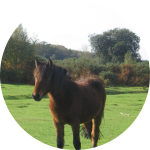| Home |
Welcome to the Horse Stall |
|
Horse Stall contains all types of information for Horse Lovers.
There are a number of products branded horse gifts and products.
Horse Articles :: Horse Jumping
|
Horse Show Jumping |
|
Probably the best known discipline, jumping is frequently shown on TV. The excitement of watching horses power over the brightly coloured fences is a delight to horse lovers from all walks of life. But, while leaping over large barriers may seem to be all there is to the jumper ring, there is more to it than that. Any breed of horse can jump, but not all horses have the ability to show well over fences. It takes a very special horse to make it to the top levels of the discipline, and a very special rider to take it there. Most jumpers that you see are Warmbloods, the product of selective breeding programs that primarily use bloodlines imported from Europe. You will also see other breeds at the higher levels, but generally the horses that make it that far have been specifically bred for the purpose. On the other hand, at the lower levels you will find a wide range breeds represented. Since jumpers are judged on performance rather than in a subjective manner like most other disciplines the breed or even the conformation type is not as important as the horse's physical and mental ability to handle the job. Jumpers need to be brave. They need to be able to approach any type of fences from the mundane to the truly weird and jump it without hesitating or knocking down any rails. The ideal jumper is built uphill, with its primary power in the hindquarters so that it can push itself over the larger jumps. Good conformation in the front end is also important as there is a ton of downward force as the horse lands after a big jump. In the lower levels many riders just race around the courses trusting their horses to get them out of any jams they might find themselves in. This is ok over small fences, but as the heights go up a lot more thought and riding skill must go into a course. Wide jumps require a longer stride while high jumps require the horse to set back in order to make the height. When these kinds of jumps are combined together they can make for a very challenging ride. Jumper courses are much more technical than hunter courses. The distances will vary sometimes requiring a long stride and sometimes a short one. The jumps are set up with approaches that can be challenging and even with multiple possibilities available depending on how handy the horse is when making turns. Many jumps are deceptive in their construction either unusually thin, sloped to one side or another or otherwise intimidating to the horse. It takes a very honest and brave horse to be successful in a truly difficult course and sometimes only one or two riders will get a clear round. The courses are judged on a number of things. First there is a maximum time allowed to complete the course. Sometimes this is quite tight and requires a fast ride. If you go over the time allowed you receive a ¼ time fault for each second. The next thing judged is whether you hit any jumps. If your horse knocks down a jump you get 4 faults. Sometimes a jump will stay up even if rattled, other times flat cups make it much easier to knock a rail flying. A horse who is intimidated and refuses gets 3 faults. If a fence is refused three times the horse is excused from the class. A fallen horse or rider is automatic dismissal. If a horse and rider gets a clear round they will be invited back for a jump off. The jump off consists of a shortened course including several elements of the original course. Time is the most important thing in a jump off. You still get faults for knocked rails and refusals, but they are added into the time rather than just as faults. The fastest time wins the class. There are several other ways in which classes are run that do not necessarily include a jump off. Special classes may also be set up that allow the rider to pick his own course with a time limit to collect points, or to test for the horse that can jump the highest and the widest. Each class is evaluated in its own way, but the basics remain the same: get over the fence and don't know down any rails. Jumping is an exciting sport and is often the first thing non-horse people think of when they think of riding. It is a lot of fun and can be very challenging. While beginners should take their time learning in the hunter ring, many hope to make it to the jumper ring in the long run. About the Author |
Top Horses |
|
| Top Horse Movies | |
Horse Resources |
|
Horse Health |
|
Horse Breeds |
|
More Horses |
|


| Copyright 2005-2021 DR Management All rights reserved |
Dog Gifts | Wildlife Gifts | Handmade Horse Gifts |
